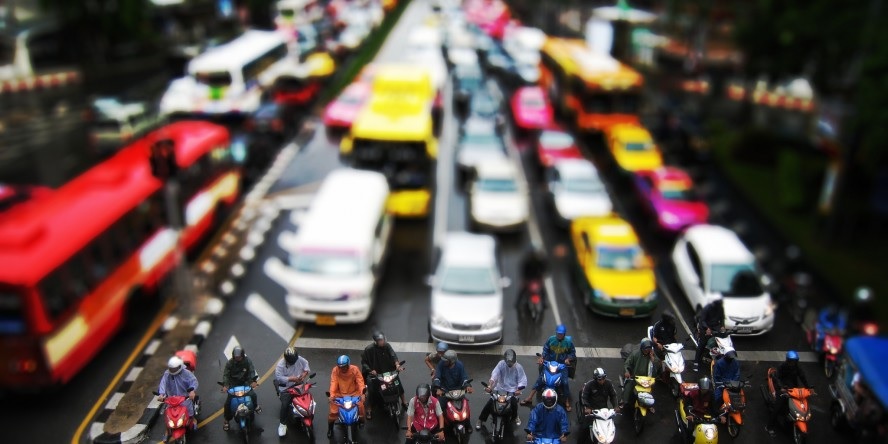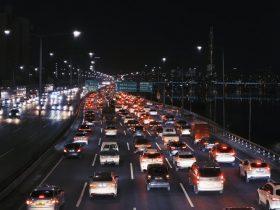A new strategy for mobility
This is a summary of the article ” 6 research routes to steer transport policy”, by Erik Bruun and Moshe Givoni, – Nature, 2 July 2015, 29 – 31. Eric Bruun is a visiting professor in the Department of Civil and Environmental Engineering, Aalto University, Espoo, Finland. Moshe Givoni is head of the Transport Research Unit, Department of Geography and the Human Environment, Tel Aviv University, Tel Aviv, Israel.
Society is not balancing the benefits and costs of mobility. While technology lets us travel faster than ever, many cities are gridlocked and slower than ever – Sao Paolo, Brazil, experiences 8 hour traffic jams. There are 1.2 million traffic deaths every year, over 90 percent occurring in developing countries, half of those to people who don’t even own or ride in cars. Deaths, illness and injury through accidents and air pollution are rising. In rich countries, sedentary lifestyles and obesity are the direct results of our love affair with the car. In poor countries people may walk to work for two hours to avoid a modest bus fare. Transport research is central to 21st century global challenges including energy provision, climate change and health and a new strategy is needed to balance costs and benefits of mobility. Yet the field is stuck in old ways. The language is changing – ‘transport’ has become ‘mobility’ – and sustainability is often mentioned but remains far from the focus. Planners are still hopelessly trying to fight congestion; researchers promote only technological solutions.
New strategy: the following six priorities for mobility research should inform better transport policies.
1) what are the long term impacts of new technologies?
While the excitement associated with a new product, service or tool is often justified, the negative, unintended impacts should also be anticipated. Take the driverless car. Depending upon whom one asks they will be widespread somewhere between 2025 and 2050. When framed as a technology that will bring more low-cost mobility that saves time and energy, it is almost impossible to disagree. But it is exactly that thinking that brought us the ‘with-driver’ private car and its unsustainable consequences. The car has become the victim of its own success; and the driverless car promises to be even more successful. Getting us out of the driverless car will be even harder.
2) how should transport systems and their impacts be evaluated?
Monetary cost-benefit analysis is an increasingly controversial method for assessing investment and policy decisions. Transport touches so many aspects of the economic and social life, particularly in urban areas, over such a long time that a financial focus alone cannot do the issue justice. Analysis of multiple criteria offers some improvement but it is unrealistic to capture all impacts in one overall score. Who gains and who suffers needs to be accounted for. An extreme example was the building of freeways through US cities in the 1960s that divided poor communities of colour whilst enabling “white flight” to the suburbs. Another example is how future generations lose out under the current system as the discounting of future costs and benefits encourages consumption of non-renewable resources now.
3) How does the structure of cities affect sustainability, living standards and functioning costs?
Studies of urban density, energy consumption and travel statistics show that altering the form of cities to reduce greenhouse gas emissions is equally as effective as improving technologies and substituting fuels, yet it receives much less attention. Energy consumption per capita by private vehicles declines with higher urban density, for instance. Total expenditures (public and private) on passenger transport also decrease when urban density increases. Yet zoning and infrastructure investment decisions remain unscientific. Understanding the drivers of sprawl is of vital importance for fast growing cities that are swallowing up adjacent farm and wetlands.
4) how can mobility beyond cities be improved?
Transport links beyond cities are important for regional development. The exodus of people lacking opportunities in the countryside, for example, is driving urbanization worldwide and increasing pressures on scarce resources. While urbanization scholars highlight the rapid growth of megacities, smaller cities and villages will continue to exist and should not be ignored.
5) how should transport be improved in developing countries?
Researchers need to assess and suggest ways to establish rapid, cheap and effective mobility systems in poor nations. Elaborate physical redesigns of the transport system and major investments in infrastructure, similar to those rich countries have made, would take years to implement and are unaffordable. But developing countries can profit from developed countries’ planning mistakes and can ‘leapfrog’ to the latest technologies. Information and communications technologies offer many possibilities. In Nairobi, Kenya, in 2013 student bus passengers were issued with smartphones that allowed city planners and researchers to track their routes, count riders and spot congestion. Many Smartphone apps show promise. For example, one that contacts a traffic signal to let a bus through an intersection could aid mobility flow. Private sector investment in such systems is lacking due to lack of buying power by governments. Public sector funding of such applied research should be encouraged. These make ideal joint projects between universities from countries both rich and poor.
6) What governance works for the transport and mobility system?
Services such as Uber — the taxi smartphone app that connects passengers with drivers in dozens of cities worldwide — and variants of car sharing have caught the transport planning sector by surprise; institutions are not sure whether to support or fight these advances. Like any innovation they are a great opportunity but also carry risks. Even with shared cars, it is physically impossible for large cities to meet everyone’s travel needs with what is essentially a variation of single-occupant vehicles. Research is needed to understand the policy implications of rapid changes in transport technologies and systems and how institutions should evolve to accommodate them. Methodologies and tools are needed for devising effective policies, combining them strategically and overcoming implementation barriers such as public and political acceptability. One method that could be expanded is ‘policy packaging’, where related policies are considered and harmonized in stages.
FRESH THINKING and NEW STRATEGY
New strategy should be based on governments support of system-level research that is needed by the public sector yet attracts scant funding from the private sector. The majority of research money for transport currently goes to technological development with commercial potential — such as the driverless car — which already receives private funding. Universities and governments need to realign research incentives to support the interdisciplinary scholarship needed. This includes stable funding and centres that can attract and nurture a variety of talent and cross-border collaboration, especially where there is lack of commercial potential but great promise to society. If not, researchers will remain in narrow specialities in which funding and publishing are safer. Our transport systems, as well as our cities, must be planned for people — not for a particular mode of transport or by a handful of companies with vast lobbying power. Delivering low-carbon mobility for all will take fresh thinking.


















